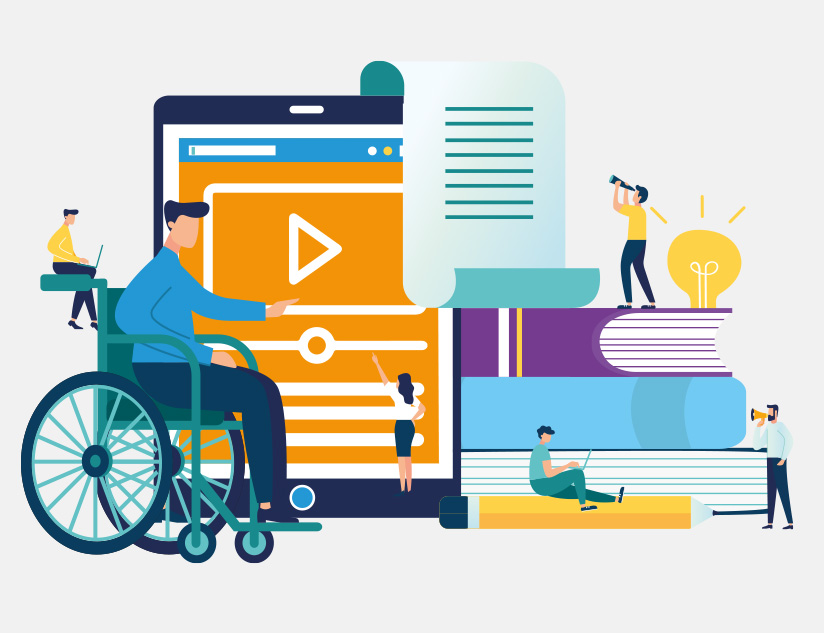4 Ways Curriculum Equity can be Achieved across Diverse School Districts
January 4th, 2022
Curriculum can play a crucial role in reducing educational inequities. It is much more than the content students learn in a particular unit, semester, or grade. It also involves the pedagogy that has a significant impact on student experiences in school. So, in a way, the curriculum determines whether students find learning engaging or boring, challenging or easy, and even if it feels fair and just.
While education has tremendous potential to be a powerful engine for disrupting structural inequities, our system has not been able to achieve this feat. In fact, it has been designed in a way that maintains a status quo responsible for perpetuating economic and racial inequality. The COVID-19 outbreak has further proved this point. The switch to digital learning, in the wake of the pandemic, not only severely impacted the academic growth of students but also worsened the longstanding disparities in educational outcomes between students of different socio-economic groups and ethnicities.
While efforts are being made to address digital equity, the issue of curriculum equity still remains to be addressed and needs to be dealt with responsibly. Since the pandemic, the existing inequities in the system have been further exposed and exacerbated, including the ones related to health and safety, mental health, and learning opportunities and experiences. This has highlighted the need for a high-quality curriculum that can empower students with access to equal and fair means of learning.
Curriculum Equity Benefits Everyone
We want all students to have a sense of agency and get equal opportunities in a world that has historically had extensive resources and support for a few students while consistently creating barriers for others. For this purpose, we need educators from diverse backgrounds equipped with a curriculum that is relevant to all sections of the community.
For students of all backgrounds, ages, and levels of development, curriculum equity can offer three crucial benefits:
1. It can enrich language, reasoning, writing, discussion, and literacy skills by creating opportunities for open conversations on different perspectives and challenging belief systems.
2. It can improve engagement levels among students by helping them feel connected to a curriculum that honors their own background.
3. It can better the school climate and safety by providing students a sense of belonging and collective responsibility in the classroom.
How to Create Favorable Conditions for Curriculum Equity
As equity issues are at the heart of the design of digital curricula, a growing number of school districts are trying to ensure equal access for all students. Here are four ways curriculum equity can be achieved in the education system:
1. Provide Equal Access and Opportunities for Learning
Every student should be entitled to equal access to the resources that are critical for succeeding in school and life. It will also help educators make crucial decisions regarding professional development and instructional resources in K-12 curricula. They can set up a favorable physical environment for both in-person and remote instruction accordingly.
Educators can use a digital learning platform to create customized learning materials to bridge this gap. They can record their classes so that students facing network difficulties can download and watch them at their convenience. These platforms not only make it easier and quicker to create content but also create it with the necessary compliance guidelines.
2. Integrate Equity-Focused Learning into the Curriculum
Besides academics, social-emotional learning (SEL) is a vital aspect of curriculum equity. SEL is the process that allows students to acquire and apply knowledge, skills, and attitudes that help them develop healthy identities, manage emotions, and achieve personal and collective goals. It is most effective when educators can ensure digital equity for students from all socio-economic backgrounds.
Digital tools can ensure curriculum equity with regard to SEL as well. An effective digital learning platform canoffer several benefits, such as:
- Provide educators with comprehensive analytics about their students.
- Help them assess the time spent by students on the specific learning materials and evaluate their learning patterns.
- Identify individual students’ strong and weak areas.
- Create, administer and score formative and adaptive assessments seamlessly.
3. Enable Personalized Learning
The COVID-19 pandemic has not only hampered academic growth for students but also worsened the longstanding disparities in educational outcomes between students of different ethnicities and socio-economic backgrounds. In a personalized learning model, the learning experiences adapt to each student’s strengths and areas of improvement. It helps students learn at their own pace and preferred style while reducing learning gaps. That is why personalized learning plays an important role in ensuring inclusivity, modifying the learning process to cater to individual needs.
With a powerful digital learning platform, educators can develop easy-to-administer formative assessments and evaluate the current academic level of each student. This, in turn, helps ensure that the needs of each student is catered to and interventions are deployed at the right time.
In addition, group assignments for project-based learning can be given to students as they help develop higher-order skills that enhance their communication, collaboration, analytical thinking, and creativity.
How Digital Learning Platforms Can Help with Curriculum Equity
A robust EdTech platform, equipped with powerful features and tools can offer educators several benefits, such as:
- Content authoring tools can simplify the modification and updating of learning materials to achieve curriculum alignment. This way, educators can cater to the varying learning needs of all students.
- It can offer equitable learning opportunities through both online and offline access to content. So, students can use mobile device to download learning materials at any time and review the content at their own convenience.
- It can enhance accessibility with features like read-aloud, captioning, multimedia elements, and more.
- It can supplement summative assessments with formative assessments that allow students to receive better and timely inputs. This will help students feel valued and they can put their efforts in the right direction.
- It has custom analytics features that make it easy to track content consumption, learning patterns, learning progress, etc. So, educators can create personalized learning paths for students belonging to different socio-economic backgrounds.
Everyone involved in the education system has a responsibility to ensure that every student knows they are valued, empowered, and able to achieve their maximum potential. Curriculum equity helps them feel included in the learning process and gives them the best opportunity to achieve their potential.












